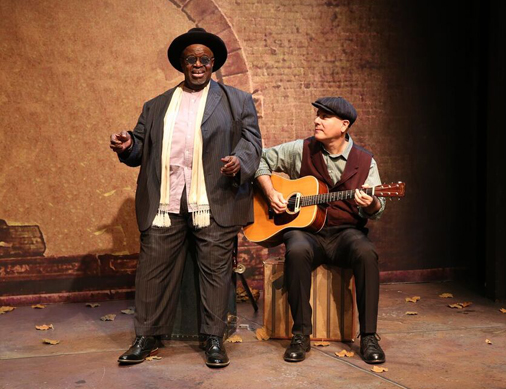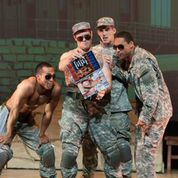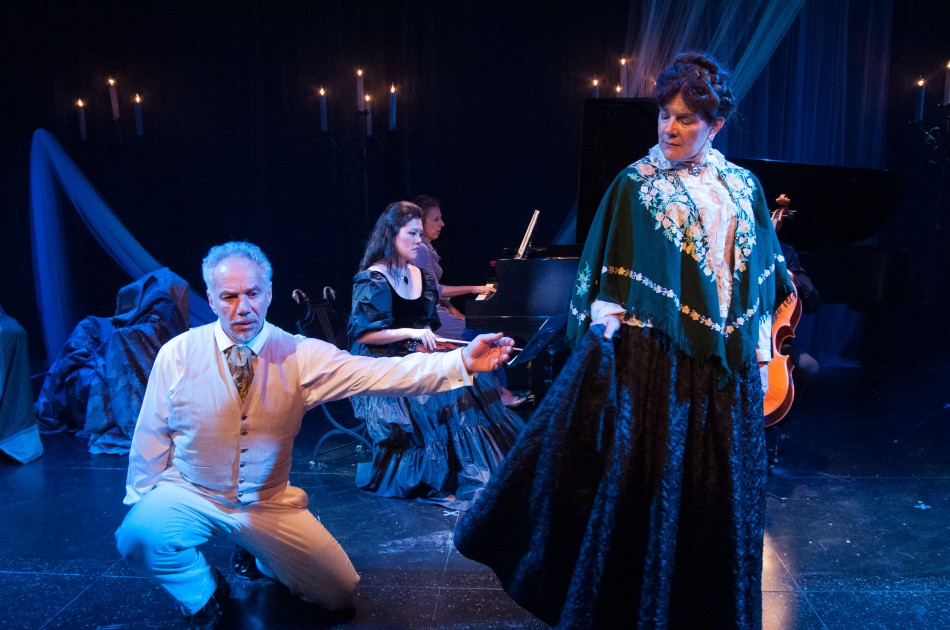by Carol Rocamora
According to its subtitle, opening night of the legendary Shuffle Along on May 23, 1921 at the 63rd Street Music Hall (Broadway & Central Park West) caused a sensation. But I can’t imagine it being as sensational as its re-imagined reincarnation, now playing at the Music Box Theater on Broadway.
That nineteen-block journey—from West 63rd Street to West 44th Street—took 96 years. It’s a cause for celebration for many reasons, and that’s just what legendary director George C. Wolfe and his long-time collaborator, dancer/choreographer Savion Glover intended. They’ve assembled a dream-team of performers and designers to tell the story of making of the first African/American musical revue that not only captured the hearts of a multi-racial audience, but also paved the way for the future of black artists in the American theatre. In short, it changed Broadway forever.
Subtitled The Making of the Musical Sensation of 1921 And All That Followed, this exuberant against-all-odds story follows four talented black artists who came up from regional vaudeville to form a historic collaboration. Brought together by a common dream, the black song-writing duo of Noble Sissle and Eubie Blake teamed up with writers F. E. Miller and Aubrey Lyles, black actors who were touring the country with a comedy act, performing in blackface (as was the convention at the time).
The foursome met at an NAACP benefit in Philadelphia, where they decided to expand one of the Miller/Lyles sketches into a full length musical. None of them had ever written a musical before, and they arrived in New York with a heavy pre-production debt. Overcoming almost insurmountable obstacles (pertaining to race as well as finance), it was a huge hit, running for roughly 500 performances and going on to a national tour. Its company members included, at various times, Josephine Baker, Paul Robeson, Florence Mills and numerous others who went on to show business acclaim, along with its creators.
George Wolfe, the driving force behind Shuffle Along’s reincarnation, is credited with the current book, though Miller and Lyles wrote the original. Wolfe wants to paint the big picture – including the challenges of mounting the original production and its effect on Broadway and race relations. Accordingly, his Act One deals with the production’s struggle to find a theatre. Refused a Broadway house because of the color of their skin, the collaborators settled for the 63rd Street Music Hall – “a theater of no consequence on a street of no consequence,” as Miller calls it. Act Two focuses on the relationship between their star performer, Lottie Gee, and Blake (who was married), and the ultimate breakup of the creative team.
The joy of Wolfe’s Shuffle Along lies in the fabulous song-and-dance numbers which make up the heart and soul of both the original and the current productions. Here, Wolfe collaborates with Savion Glover –the marvelous duo who gave us Bring In Da Noise/Bring In Da Funk twenty years ago. Glover brings to Shuffle that same remarkable combination of energy and precision that made Noise/Funk both exuberant and electrifying. The dozens of tap dancers (including the so-called Jazz Jasmines, The Dancin’ Boys, and the Jimtown Flappers) fill Santo Loquasto’s sleek, snazzy set with a beat that has audiences jumping to their feet, cheering in exhilaration.
As for the principal singer/dancers, Wolfe has assembled an amazing all-star cast, featuring Brian Stokes Mitchell as the smooth Miller, Billy Porter as the flamboyant Lyles, Joshua Henry as the charismatic Sissle, and Brandon Victor Dixon as the charming Eubie Blake. To watch this quartet dance, sing, and interact on stage is theatre history in the making and remaking.
As if that weren’t thrilling enough, the divine Audra McDonald, goddess of the American musical, plays Lottie Gee, Shuffle Along’s temperamental diva, with her usual brilliance and flair. Her sublime voice gives numbers like “Wild About Harry” and “Love Will Find a Way” an added richness and dimension. She’s one of those rare performers who is both charismatic and at the same time generous in sharing the stage with others. In those gorgeously colorful costume (by Ann Roth), she’s all that a star should be.
Wolfe ends his story with a flash-forward of the lives of his principal performers, all of whom enjoyed future success. It’s a technique that Kander & Ebb used in their Scottsboro Boys, and I found it especially touching. Sitting through this moving and marvelous homage to African/American theatre history, I only had one wish – that somehow Savion Glover himself would appear on stage, to join in the joy.
Shuffle Along. Playing an open run at the Music Box Theater (239 West 45th Street, between Eighth Avenue and Broadway) Running Time: 2 hrs. 40 minutes www.shufflealongbroadway.com
Photos: Julieta Cervantes


























